This year Honda finally came to the game with their first 7-seat SUV, in the CR-V model.
I was expecting a 7-seat CRV to turn up to test, but Honda sent a 5-seat top-spec AWD (All Wheel Drive) Sport Sensing model instead. Yes, it’s a weird model name, but the ‘Sensing’ part of it refers to the safety aids Honda adds to this model.
The 7-seat model would have been perfect to test, as we’ve been inundated with seven seater SUVs this year, but hey I’m not one to turn down a week-long test in the new CR-V. Drive Life’s Rob Clubley drove the new CR-V briefly during the launch of it in August (along with the Civic Type R) so I was keen to get behind the wheel.
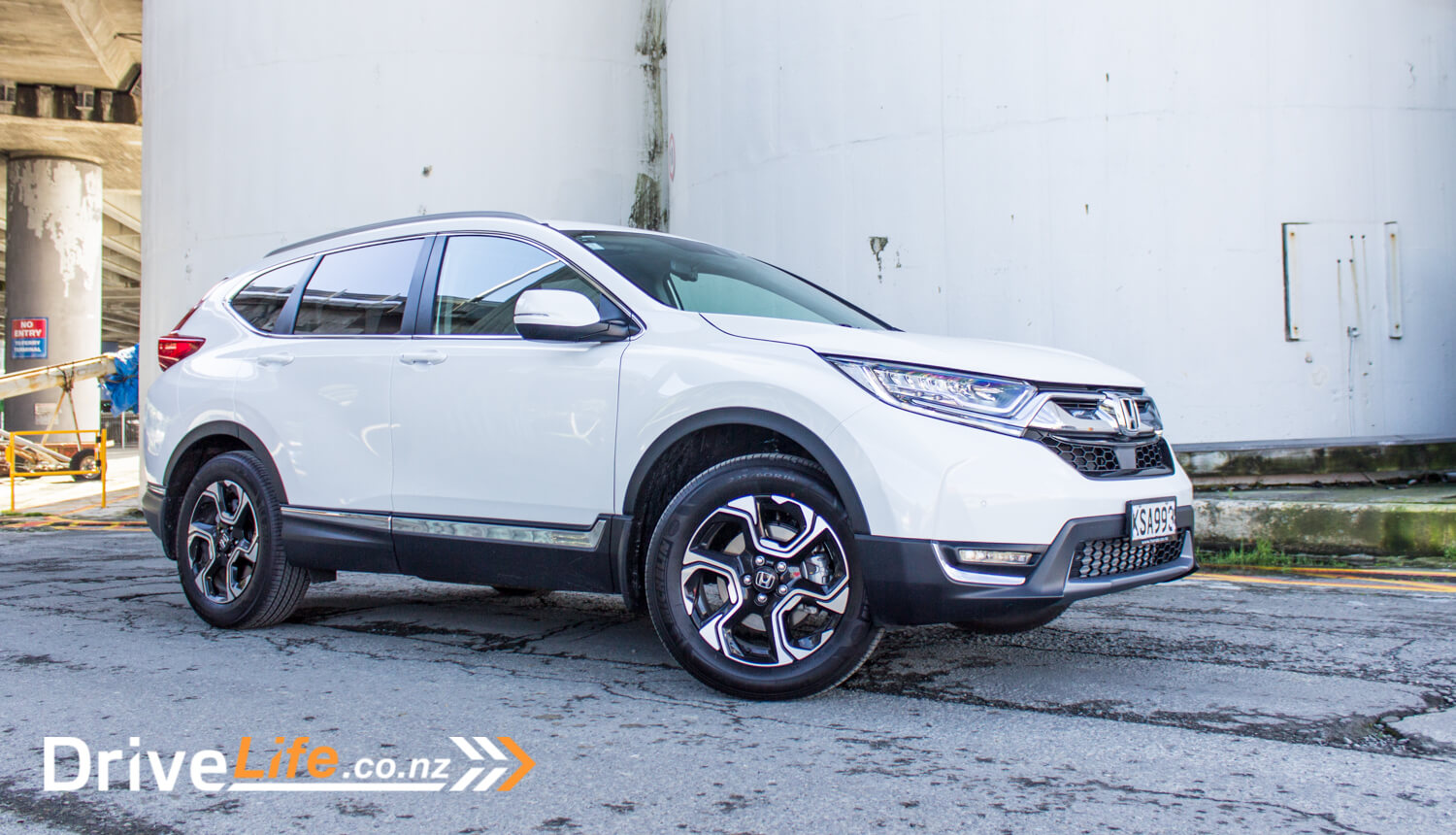
The Range
At last Honda dumps the 2.4-litre engine that was a bit ‘meh’ and gives us their 1.5 VTEC turbo instead. All CR-V models are fitted with the same engine and CVT.
Honda gives us a bit of a strange model selection with the CR-V. At the bottom end is the 2WD Touring model ($37,900), which is a 5-seater, and this model is available as AWD ($40,700).
Then there’s the 2WD Sport 7 model – which is the 7-seat model and only available in 2WD (what the?) at $44,900. So that’s over $4k more for the two extra seats, but you lose the AWD.
Top of the range is the AWD Sport Sensing (tested) at $47,900 – but there’s no 7-seat option. I’m sure Honda must have a reason for this, I’m just not sure what that reason is. Perhaps they felt it would be priced too high, or there wasn’t enough room for seven seats and AWD as well.
The base model comes with 18” alloys, halogen projector headlights, fog lights, auto headlights, LED DRLs, front and rear parking sensors, an electric tailgate, a 7” touchscreen main display with Android Auto and Apple CarPlay, SatNav, 3-angle reversing camera with Dynamic Parking Aid, leather steering wheel, Active Noise Cancellation, keyless entry and start, dual-zone climate AC, cruise control, speed alarm, Lane Watch camera system, Trailer Stability Assist, tyre deflation warning system, and Hill Start Assist. That’s a pretty comprehensive list for a base model.
The AWD model simply adds AWD with a Torque Display for the driver.
The Sport 7 model then adds tilt/slide panoramic Sky Roof with an electric blind, auto wipers, leather trim, heated front seats, 8-way electric driver’s seat with memory function, paddle shifters, ambient lighting and rear controls for the AC. As mentioned there’s no AWD version of this model.
At the top end, the AWD Sport Sensing version goes all out, adding LED Intelligent headlights with auto leveling and Active Cornering Lamps, LED front fog lights, rear privacy glass, Hydrophilic (!) and heated door mirrors with auto reverse-tilt, 4-way electric passenger seat, auto up/down windows, and a digital radio system (DAB+). The ‘Sensing’ part of the name means it also has adaptive cruise control, Lane Keep Assist, Collision Mitigation Braking System, Forward Collision Warning, Road Departure Warning, Lane Departure Warning and an Auto High Beam Support System.
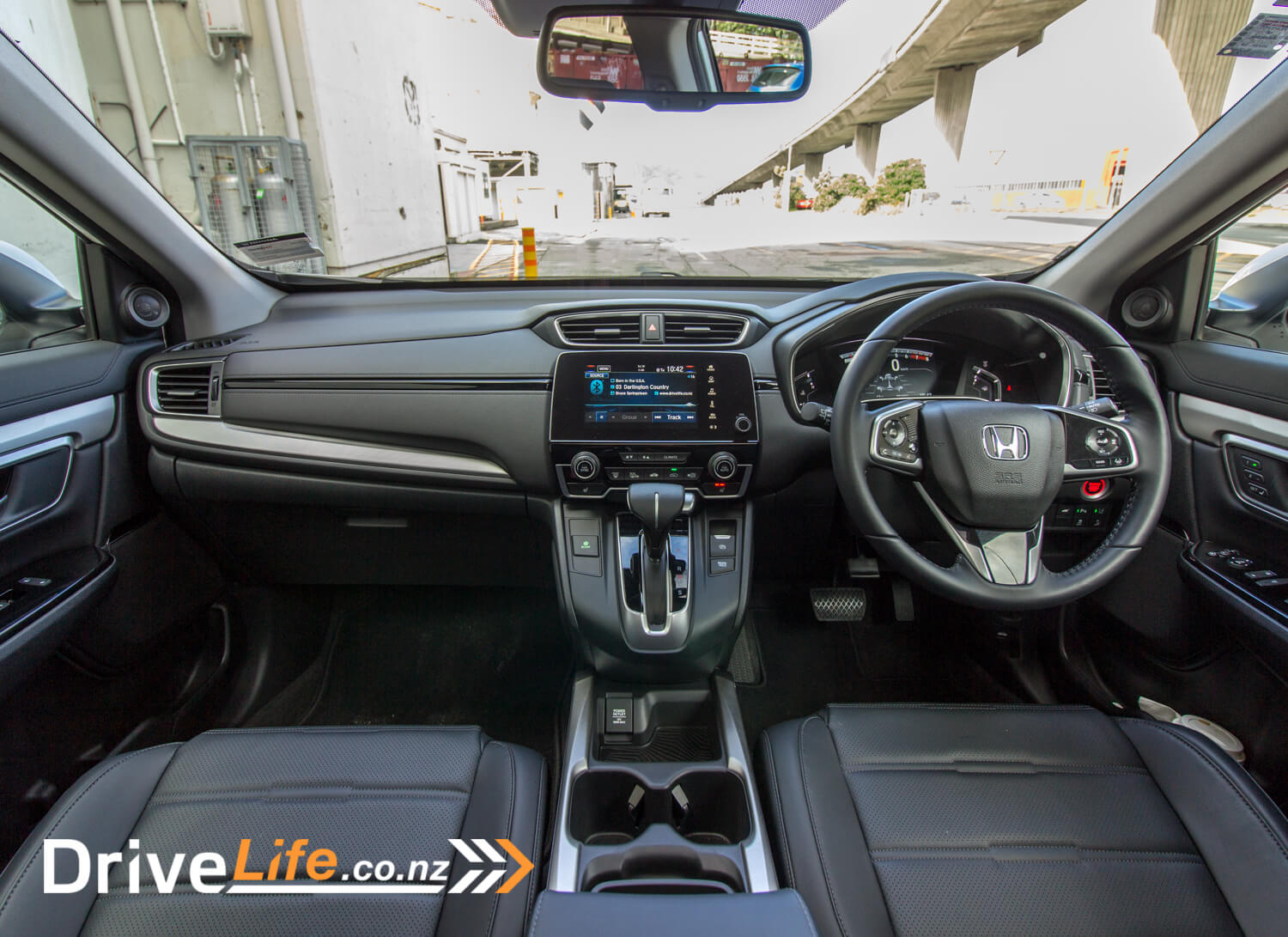
First Impressions
A grown-up CR-V was my first impression. Distinctively a CR-V, but on steroids. It has the current angular Honda look going, and from some angles looks quite attractive. The white of our test car didn’t do it for me, but others said they preferred a CR-V in white, so there you go.
There are two bonnet bulges on the very edges which are quite high, and give the car a muscular look. This car looks so much bigger than the previous model, all the way around.
I wouldn’t call the new CR-V attractive in the way a CX-5 or CX-9 is, but it’s a pleasing look, and didn’t raise the same number of negative comments as the Subaru XV did that I had just dropped off. As the days went on, I started to appreciate the CR-V more and more. There are lots of different angles to take in, especially at the front.
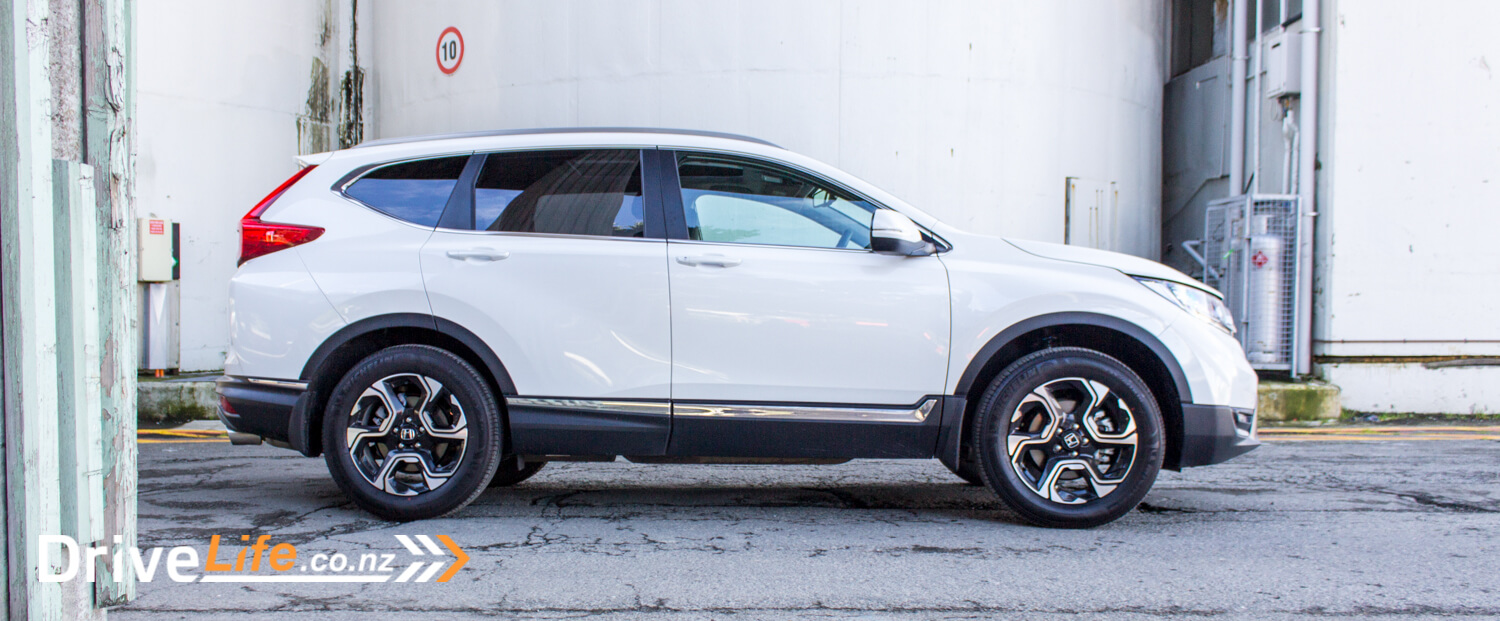
So the front, sides and rear of the car don’t offend like the XV did for many, but I’m struggling with the car’s identity here; yes it looks like a bigger CR-V, but from certain angles looks like an SUV from a couple of Korean manufacturers.
At least the wheels set it apart – nicely designed and certainly something a little different. For a change, the XV I had got negative comments (normally people rarely mention wheel design) but for the CR-V, most comments were positive. It was weird to get comments on the wheel design on two cars in a row, but points go to Honda this time.
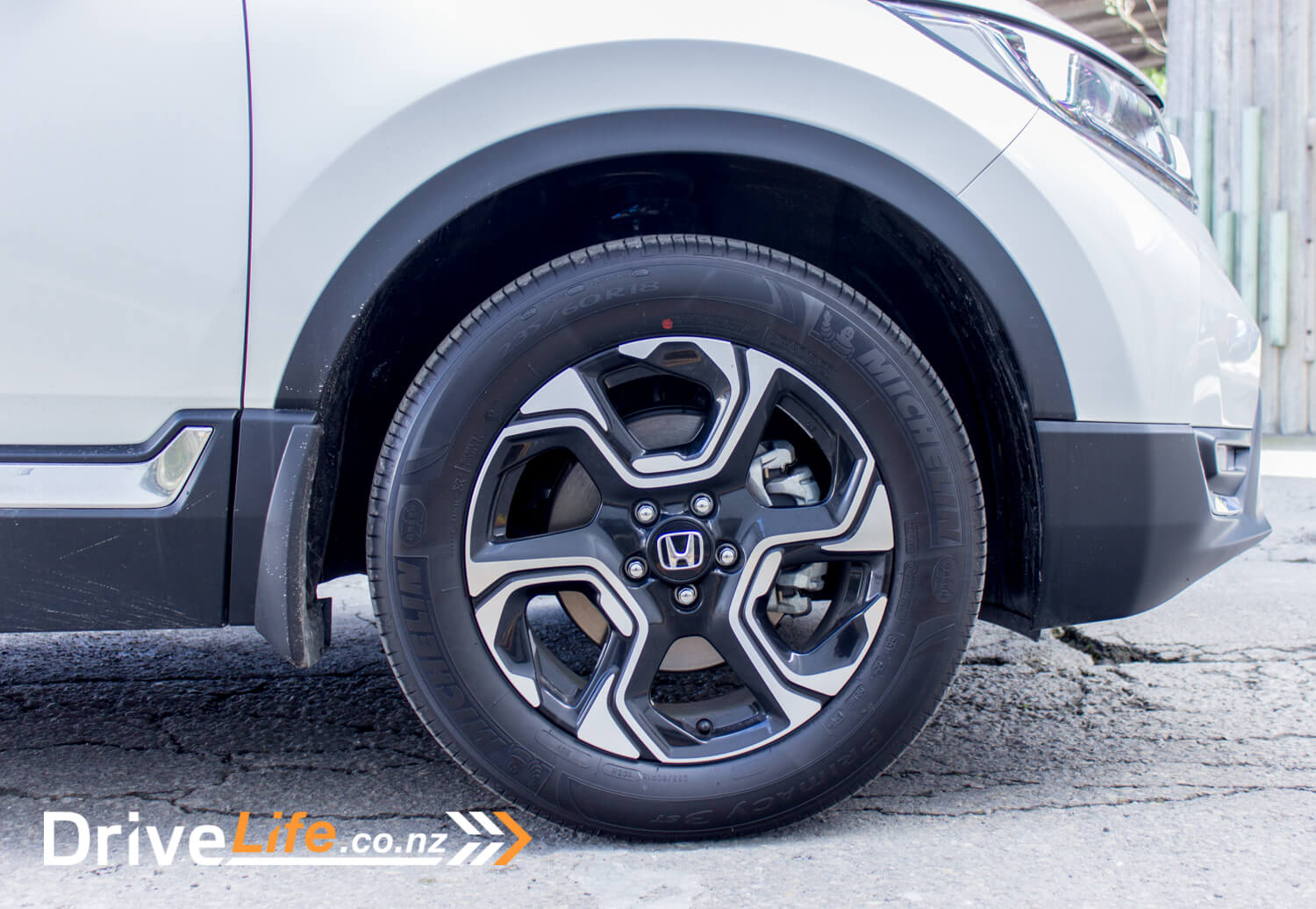
The Inside
Since this is the top spec model, black leather everywhere seems to be the key. There are splashes of silver plastic trim as well, but on the whole everything is black. It does look and feel quite luxurious though. The tilt/slide panoramic sunroof helps here, and throws lots of natural light into the cabin if you leave the electric blind open.
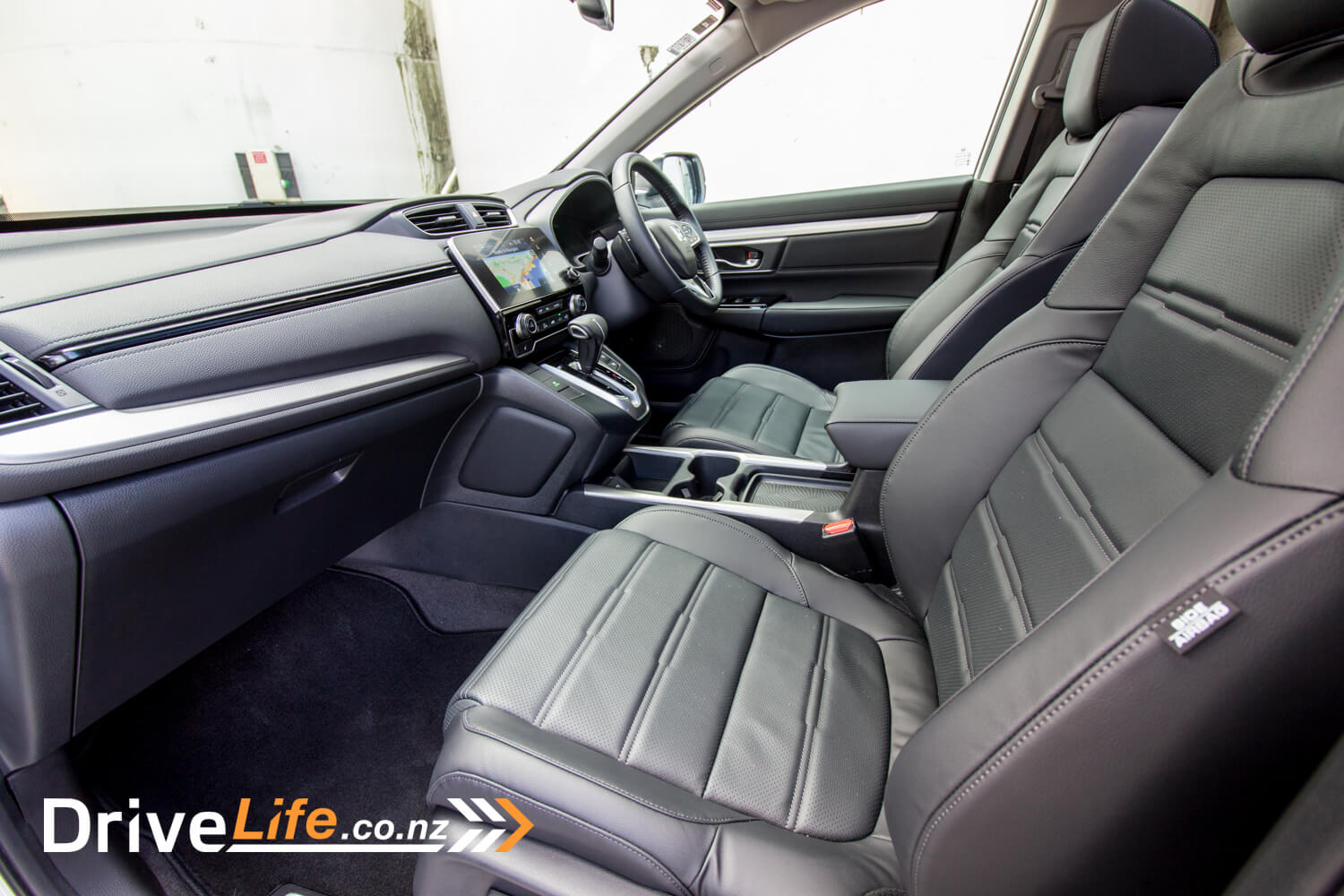
Sitting in the driver’s seat, instantly you see there’s only a digital speedo, with a bar-type rev counter above it. Still, with a never ending focus of not going even 1km/h under the speed limit, perhaps a digital speedo only is the way to go. I got used to it quickly enough.
The leather wheel feels great – perfectly sized and the leather has a real quality feel to it. Honda has given the CR-V their now-common slider control for adjusting audio volume from the wheel.
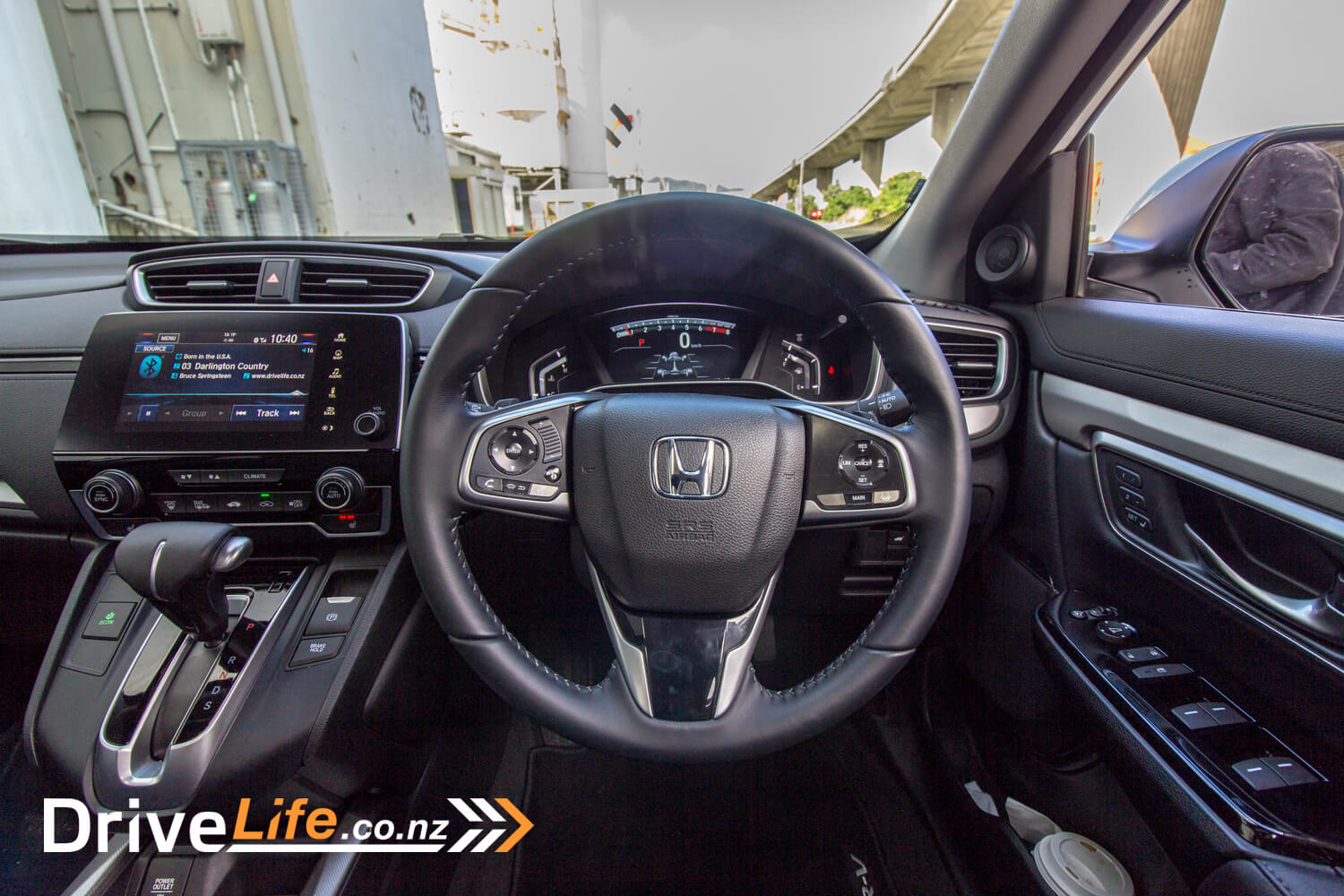
You can also push the very top (or bottom) of the slider to adjust the volume, or run your finger over the slider instead. I didn’t find it too easy to use, so in the end I only used the top and bottom of the button. It’s a bit tricky to try to slide your finger over the slider just the right amount, while you are driving. It would have been nice to be able to turn this feature off. Apparently the Civic has a software update to be able to turn this off, so hopefully that will flow down to the CR-V.
There is a 4-way toggle switch with the other audio controls on the steering wheel, with the left/right toggle as track forward/back. The annoying thing for me here was that the up/down toggle (which would be volume up/down on other cars) is the source change button, which I kept hitting thinking it was for volume. I’m sure I’d get used to it over time but it frustrated me for a while. I think a separate single source change button would be better.
Still on the steering wheel, there is an ‘info’ button which cycles through the available displays for the driver’s information display. There are quite a few options to look at here, if you are that way inclined. My only gripe with this is that to select a new item, you tap the Info button and wait for the display to change. It isn’t instant like other manufacturers. And it takes 13 seconds for the display to change. Initially I thought I was doing something wrong, and was looking for an ‘OK’ button. But no, hit the Info button and wait 13 seconds, and the display will change.
Perhaps Honda is trying to teach us patience (it worked, sort of).
There’s a good-sized centre console cubby with an HDMI port, 2 USB ports and a 12V charging socket. Just in front of this is another small cubby, with a hidden section underneath. Handy.
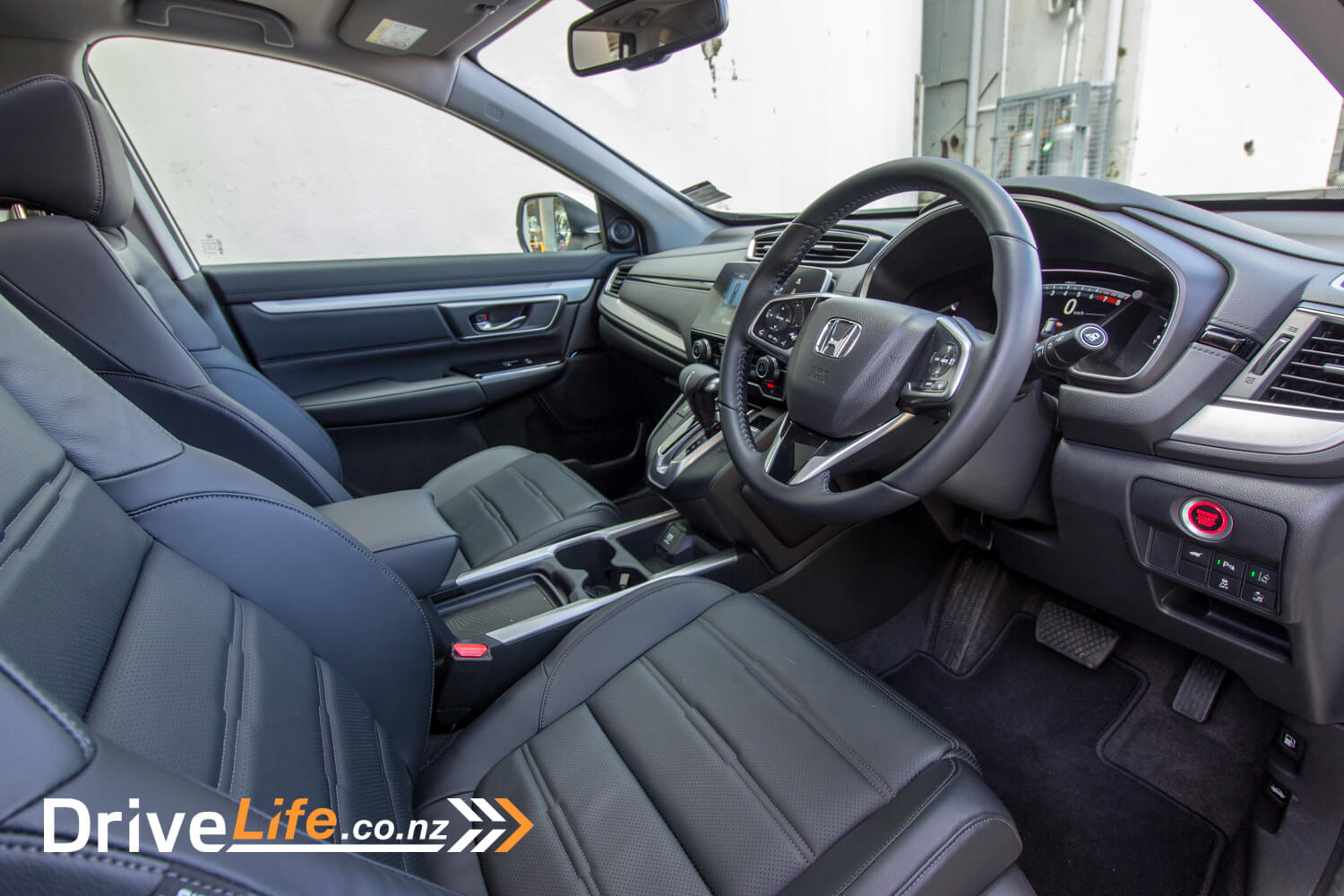
Rear seat passengers also get two USB ports. Speaking of the rear, the doors open almost perpendicular to the car, so super-easy access to the rear seats. Loads of leg room too (leg room in the rear has increased by 50mm over the previous model), and comfy seats. In fact all the seats in the CR-V are comfy, and although they are a little on the firm side, the support is there.
Back in the front, there’s a sunglasses holder which doubles as a conversation mirror, which we are starting to see more and more of in SUVs. No more adjusting your interior mirror to spy on the kids, just pop down the sunglasses holder one notch and spy away, guilt-free.
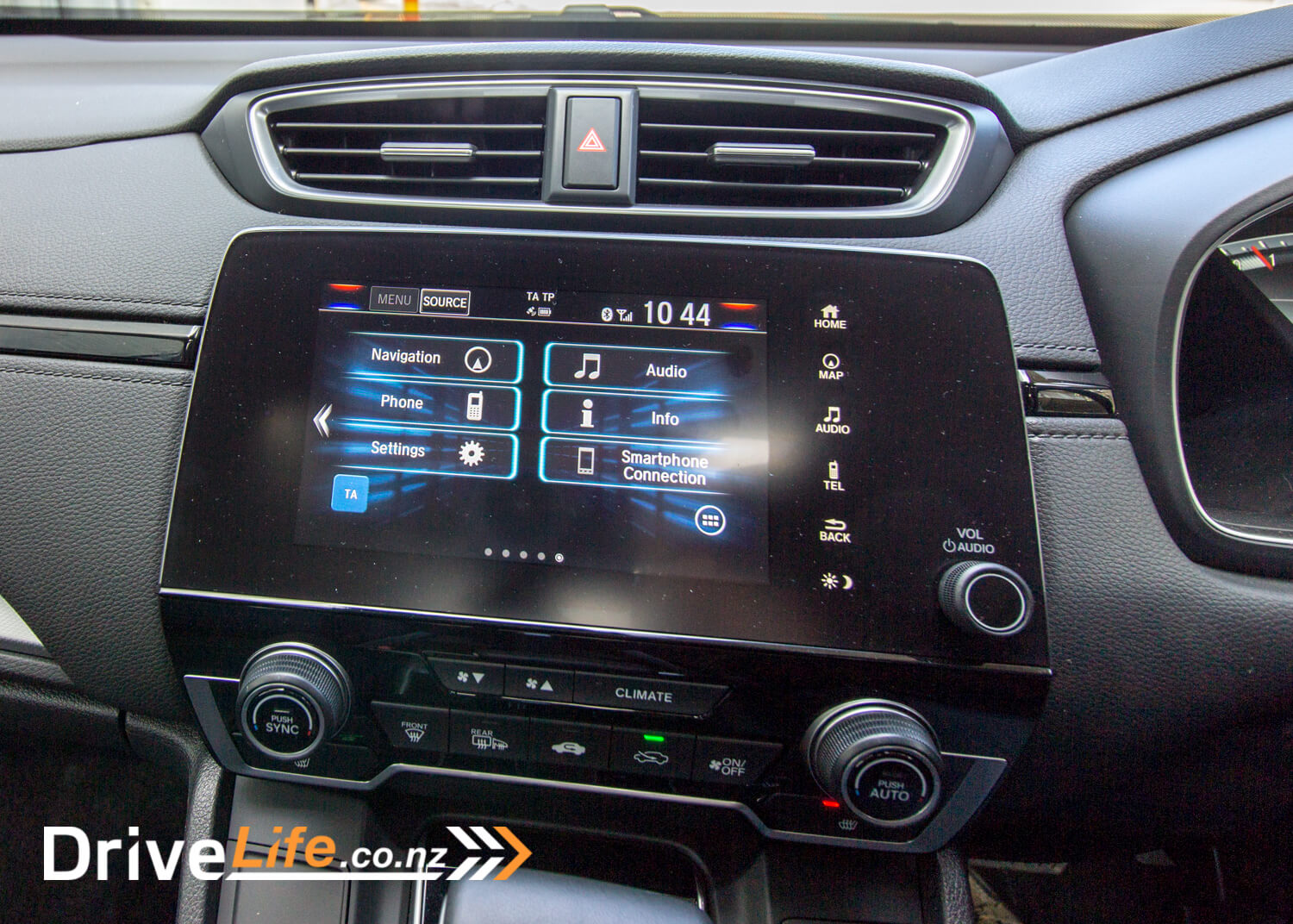
Sitting in the driver’s seat sees a mixture of plastics used, lots of them hard plastics but your eye and hands don’t automatically fall to these, which is a good thing.
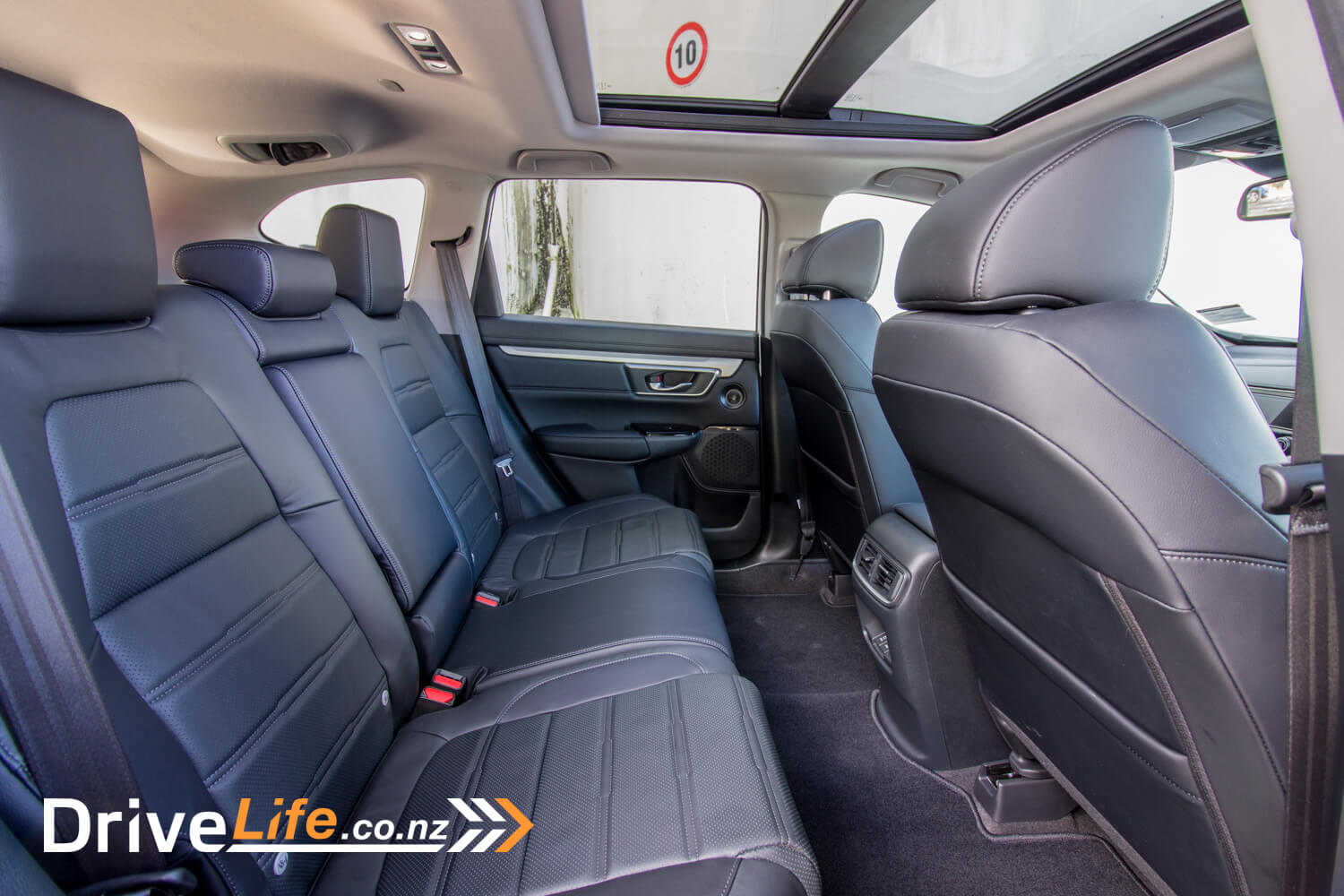
There’s a 7” central display, and this is completely flat except for a single power/volume knob (yes!). It looks very classy. The media system is Honda’s standard, and works simply and intuitively, so you shouldn’t have any problems there.
Audio quality is good, but for some reason you can’t browse tracks when using your phone as the music source. It’s a matter of getting your passenger to do it on your phone, or if you are on your own, pulling over and changing playlists etc. Not ideal. You can move up and down the tracks, but you can’t browse other folders, playlists, artists etc.
Rear cargo room with the seats up is excellent at 522 litres, and a good 1022 litres with the rear seats folded down.
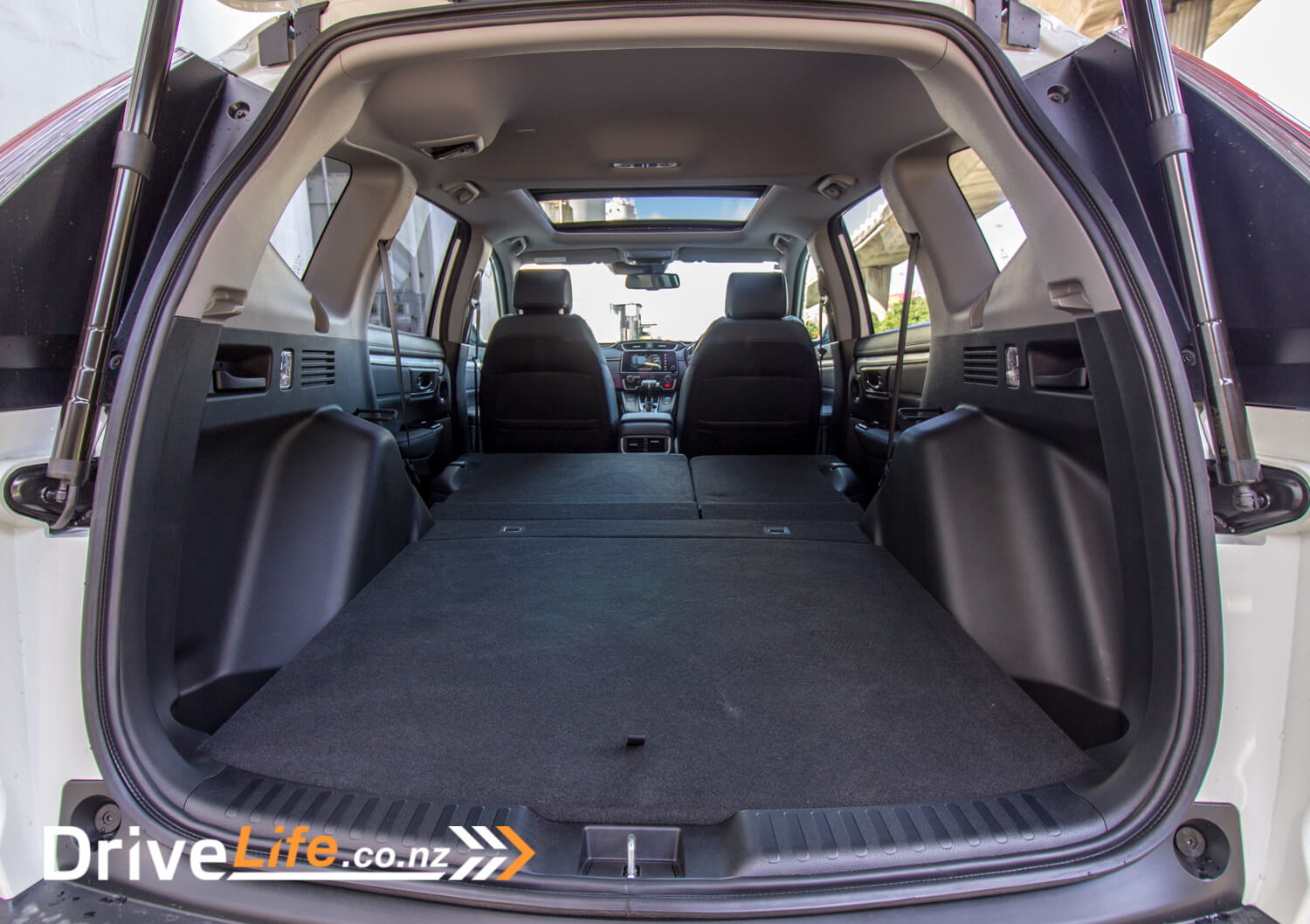
The Drive
So good and bad points for the CR-V on the inside – let’s hope the drive is better. And it is, on the whole. That little 1.5 turbo VTEC motor goes so well, even in the heavier (1642Kg) CR-V. This is the same engine used in the Civic and HR-V, so it’s looking like Honda’s mainstay for a while.
While the old 2.4 felt a bit asthmatic at times, the 1.5 is a marked improvement. If you floor it, it’s brisk, and relatively quiet. With 140Kw and 240Nm, it should go well.
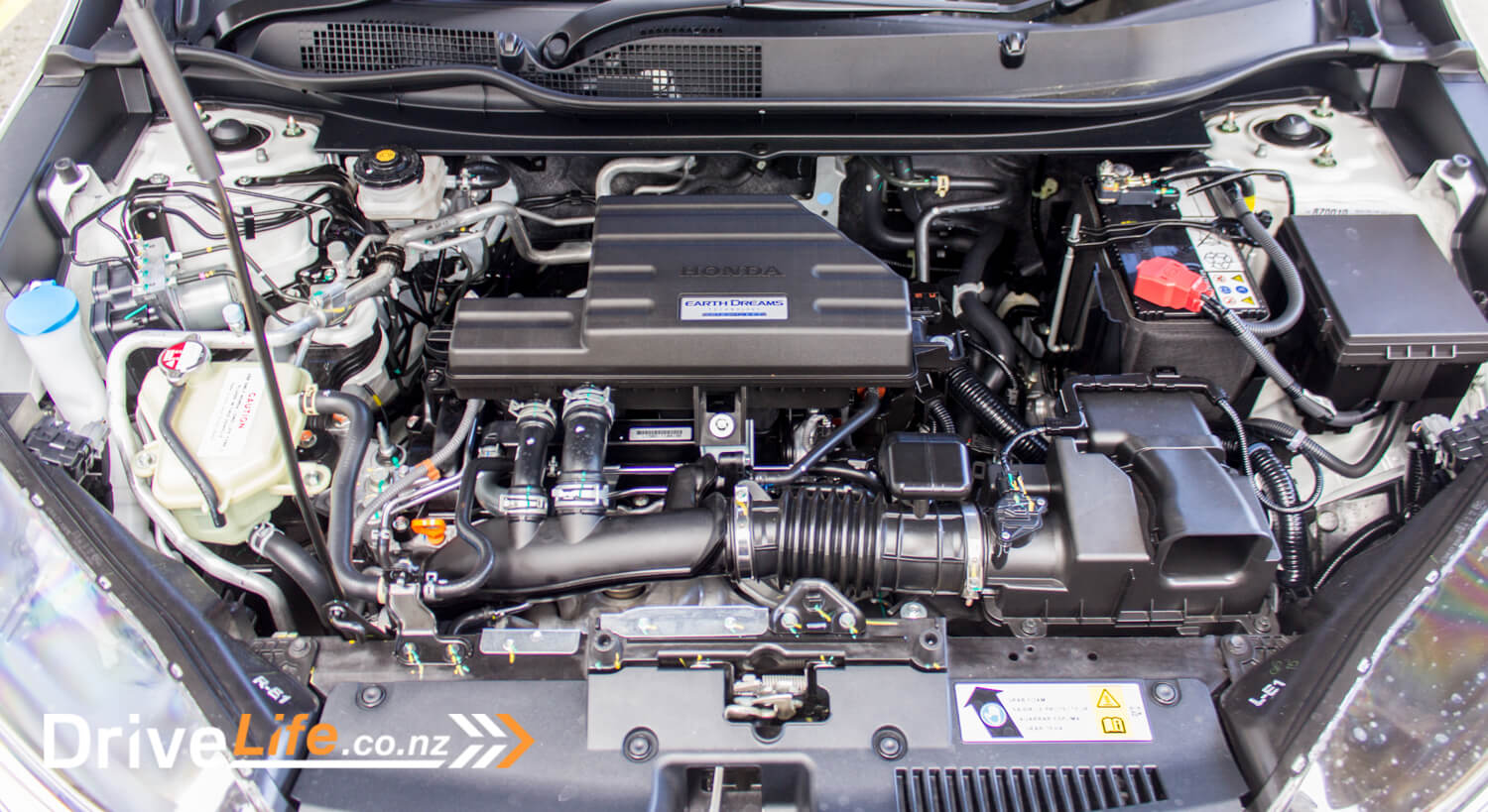
As usual for Honda, the CR-V is fitted with their CVT with stepped mode. It’s hard to find a CVT I like, the driving experience is just not there. The Honda is better overall than most on the CVT front, but I can only dream on what a great drive it would be with a 7 or 8-speed ‘normal’ automatic. I live in hope.
The engine is nicely quiet, almost noiseless on the motorway at a cruise, and wind noise is almost non-existent on the motorway too – bonus points to Honda for this. It’s an exceptionally quiet motorway cruiser. There is some tyre roar on certain road surfaces, but it’s likely you can hear the tyres as everything else is so quiet.
Ride-wise, more points to Honda on this front; supple, and speed bumps are well taken care of. It’s quiet too, with no suspension noise coming through. In fact I had just handed back the Subaru XV and had commented on the quietness of the suspension on that car and the CR-V was on par with the XV.
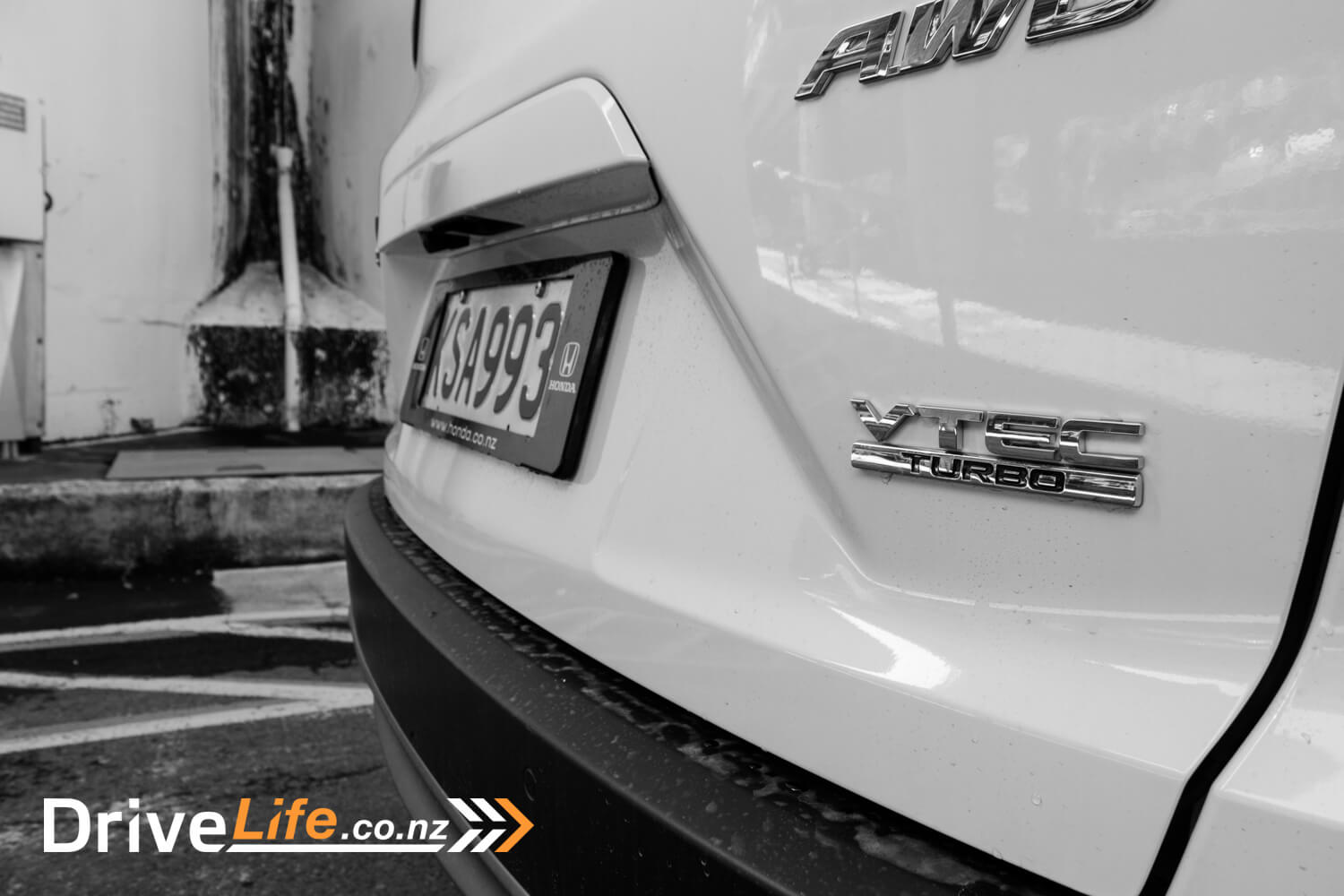
All round visibility is good, especially with Lane Watch camera. This is a great party trick of the CR-V (and other Hondas fitted with it); even on the motorway you can freak your passengers out by turning on the Lane Watch Camera with the button at the end of the indicator stalk, to see what traffic is in the left lane.
This does mean that there is no Blind Spot Monitoring, which is a shame. I would have loved to have both the Lane Watch camera and BSM, to be covered from all sides.
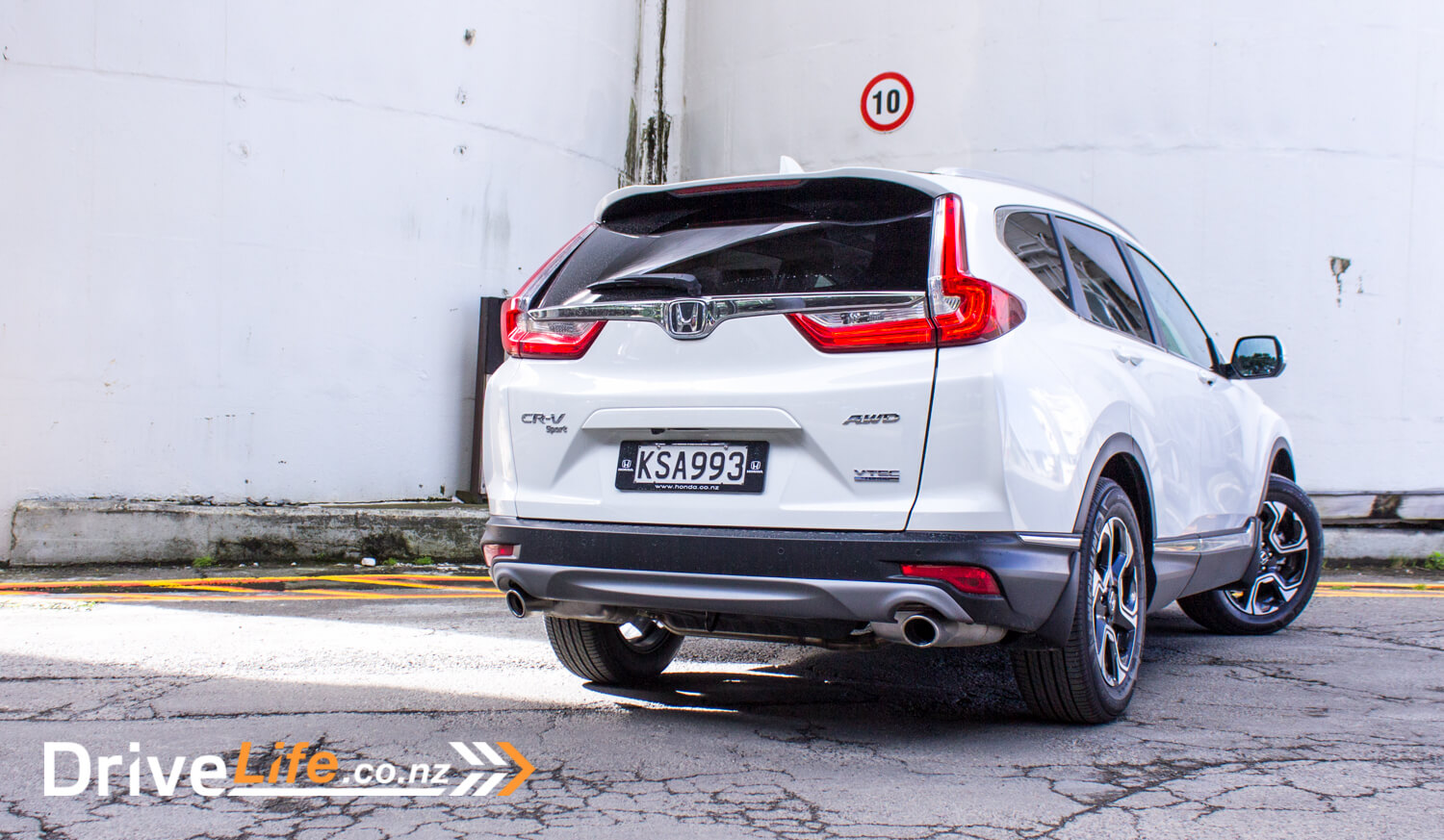
The CR-V is fitted with an electric park brake, and has Honda’s Auto-Hold function, which I always use. The only thing with this is that Auto Hold goes off when the car goes off; if you use it a lot (I do) it means turning it back on every time you start the car, if you remember.
SatNav is standard on all CR-Vs, and it works very well. The current speed limit is shown on the central display, and turn-by-turn instructions can be shown on the driver’s display. It’s a shame that the speed limit isn’t also shown on the driver’s display, but on the whole the SatNav system works perfectly.
Over only 300km, I managed to average 8.1L/100km of fuel, while Honda suggested a combined rating of 7.3. So I wasn’t far off, but even 7.3 seems high for a 1.5-litre car. But then there’s all that weight to haul around; the 1.4-litre turbo Skoda Kodiaq averaged 8.9 and that car is about the same weight as the CR-V. The 2-litre Subaru XV gave me 8.0L/100km.
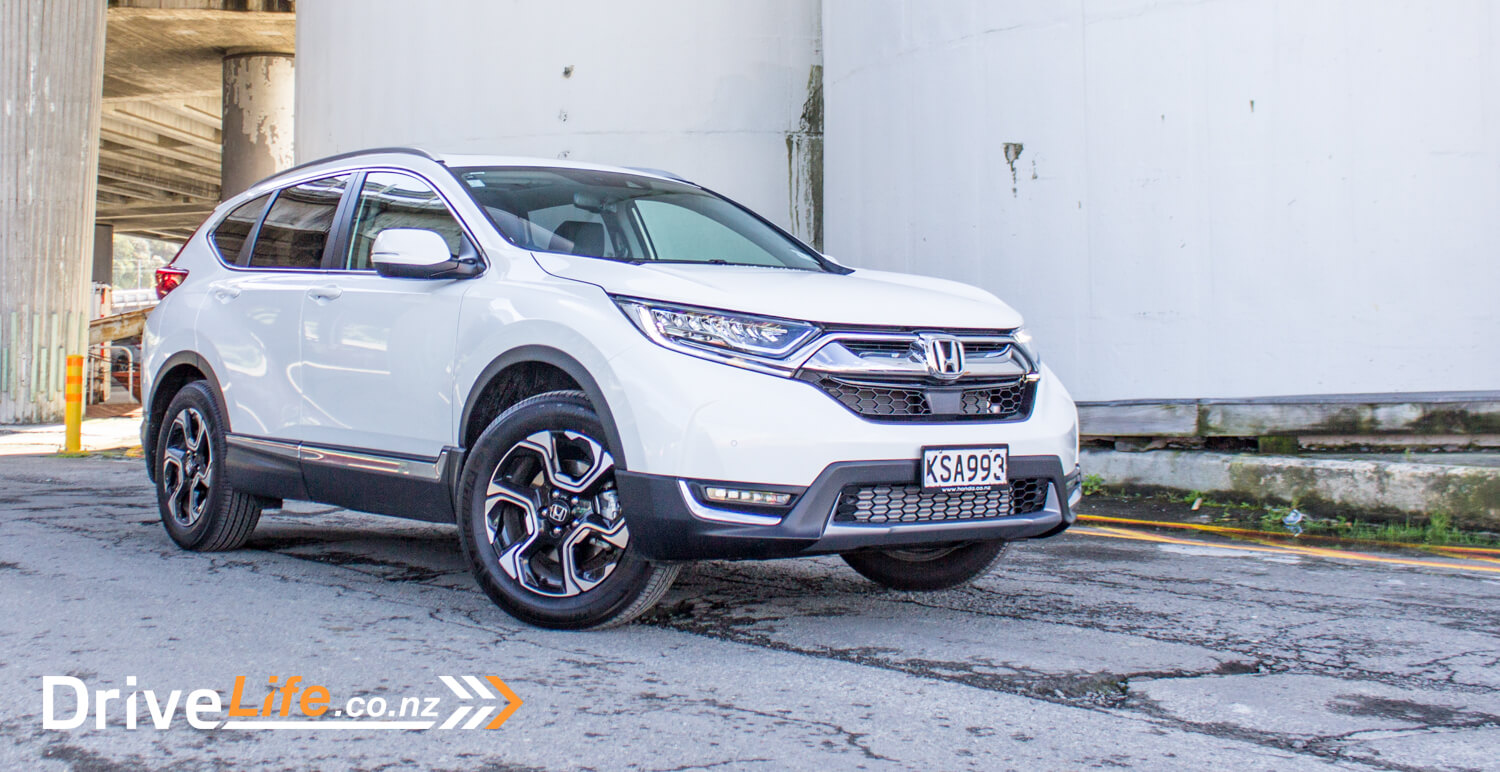
The Competition
I’ve picked off some medium sized, top-spec SUVs here to compare apples and apples. The Honda shows some good value for money here.
| Brand/Model | Engine | Power/Torque | Fuel L/100km | Price – High to Low |
| Hyundai Tucson Elite Limited AWD | 1.6-litre four-cylinder turbo petrol | 130Kw/265Nm | 7.7 | $59,990 |
| Toyota RAV4 Limited AWD | 2.5-litre, four-cylinder petrol | 132Kw/233Nm | 8.5 | $59,690 |
| Mazda CX-5 Limited AWD | 2.5-litre, four-cylinder SkyActiv petrol | 140Kw/251Nm | 7.5 | $55,495 |
| Holden Captiva LTZ AWD | 3.0-litre, six-cylinder petrol | 190Kw/288NM | 8.1 | $54,990 |
| Renault Koleos Intens AWD | 2.5-litre, four-cylinder petrol | 126kW/226Nm | 8.3 | $54,990 |
| Subaru Forester Premium AWD | 2.0-litre flat-four turbo petrol | 177Kw/350Nm | 8.5 | $54,990 |
| Ford Escape Titanium AWD | 2.0-litre, four-cylinder turbo petrol | 178Kw/345Nm | 8.6 | $53,990 |
| Nissan X-Trail Ti AWD | 2.5-litre, four-cylinder petrol | 126Kw/226Nm | 8.3 | $53,490 |
| Kia Sportage GT Line AWD | 2.4-litre, four-cylinder petrol | 135Kw/237Nm | 8.5 | $51,990 |
| Honda CR-V Sport Sensing AWD | 1.5-litre, 4-cylinder VTEC turbo petrol | 140Kw/240Nm | 7.4 | $47,990 |
The Pros and Cons
| Pros | Cons |
|
|
What do we think of it?
The original CR-V was mind blowing for many buyers; built-in fold-out picnic tables? Who knew?
The 2017 has no picnic tables or the full Magic Seat system from the Jazz or HR-V. It doesn’t have an outstanding and innovative thing that makes you say, “Look at this – no one else does this”. It’s gone from innovative to just another SUV.
That’s not to say it isn’t a good SUV – it drives well, looks good and is good value. And I am sure there are many 2016 CR-V owners who will naturally upgrade to it. Hopefully for the next generation, Honda will once again blow us away with something innovative.

Rating, 4.0 chevrons
| Vehicle Type | Medium AWD SUV |
| Starting Price | $37,900 |
| Tested as Price | $47,900 |
| Engine | 1.5-litre, VTEC turbo Earth Dreams petrol 4-cylinder |
| Transmission | CVT |
| Kerb Weight, Kg | 1642 |
| Length x Width x Height, mm | 4594x1855x1689 |
| Cargo Capacity, litres | 522/1084 |
| Fuel Tank, litres | 57 |
| Fuel Economy | Manufacturer’s rating, combined: 7.4 L/100Km
Real World: 8.1 L/100Km |
| ANCAP Safety Ratings | 5 Stars |
| Warranty | 5-years unlimited kilometres with 24/7 Roadside Assist and 24/7 Collision Assistance |
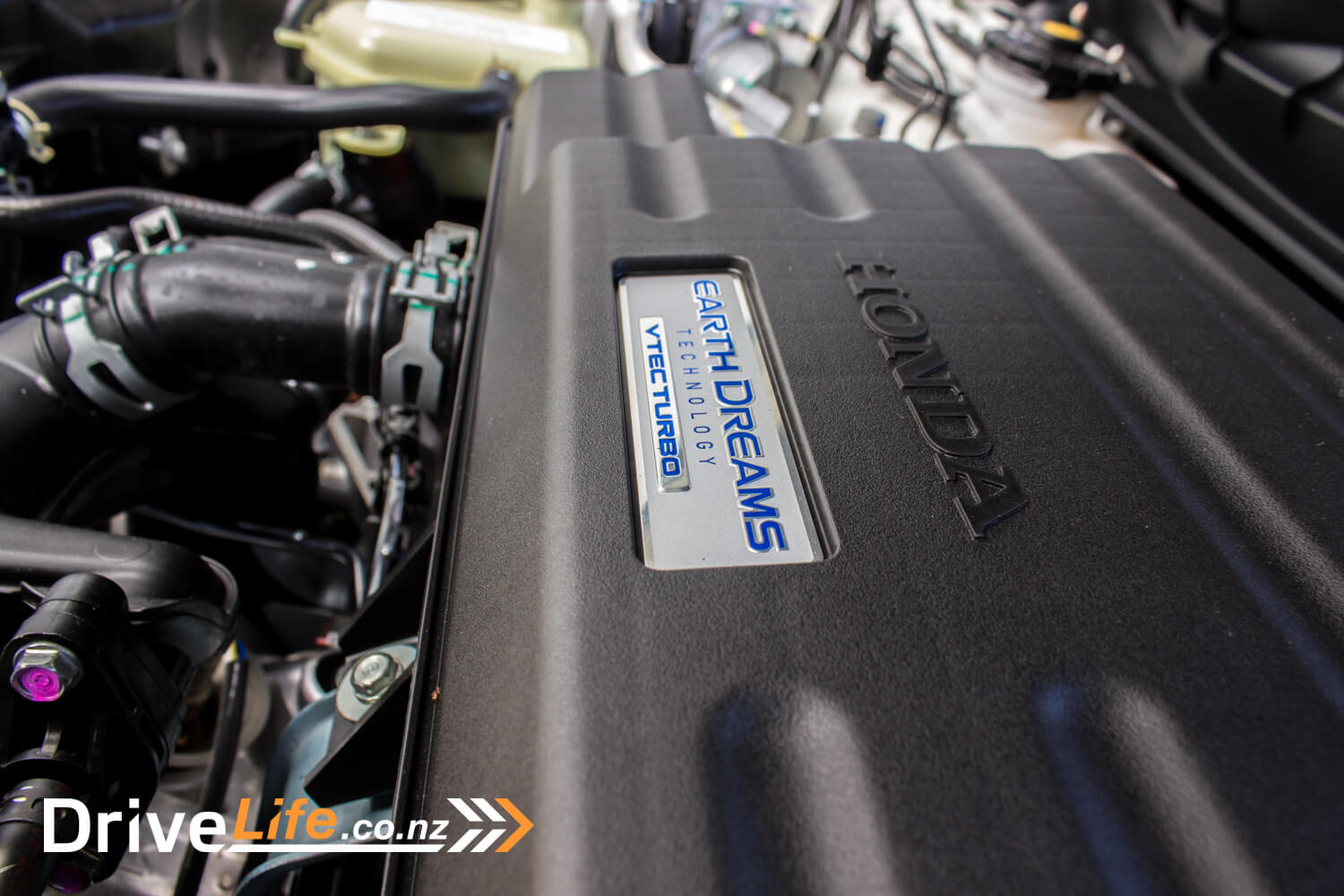

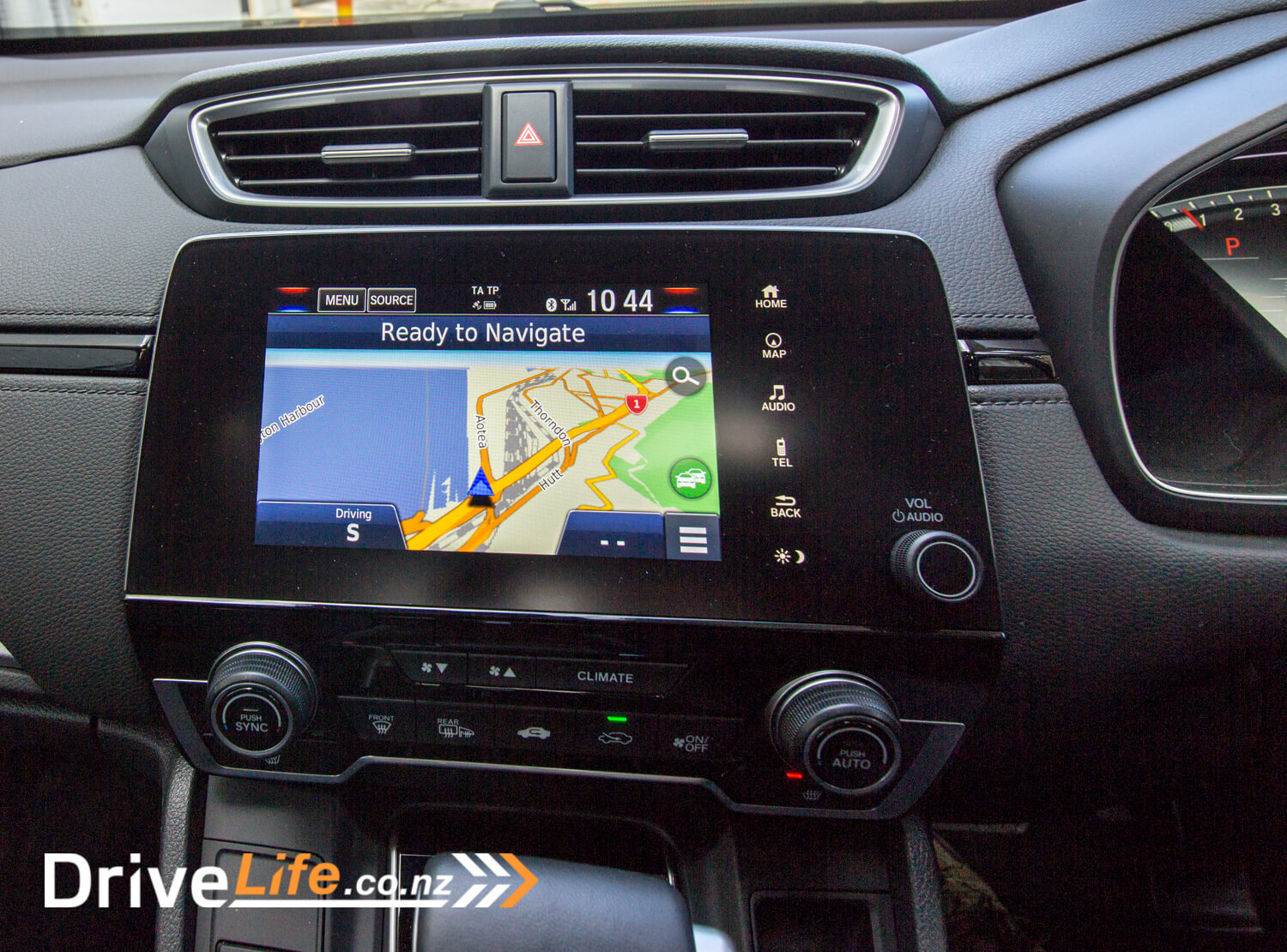







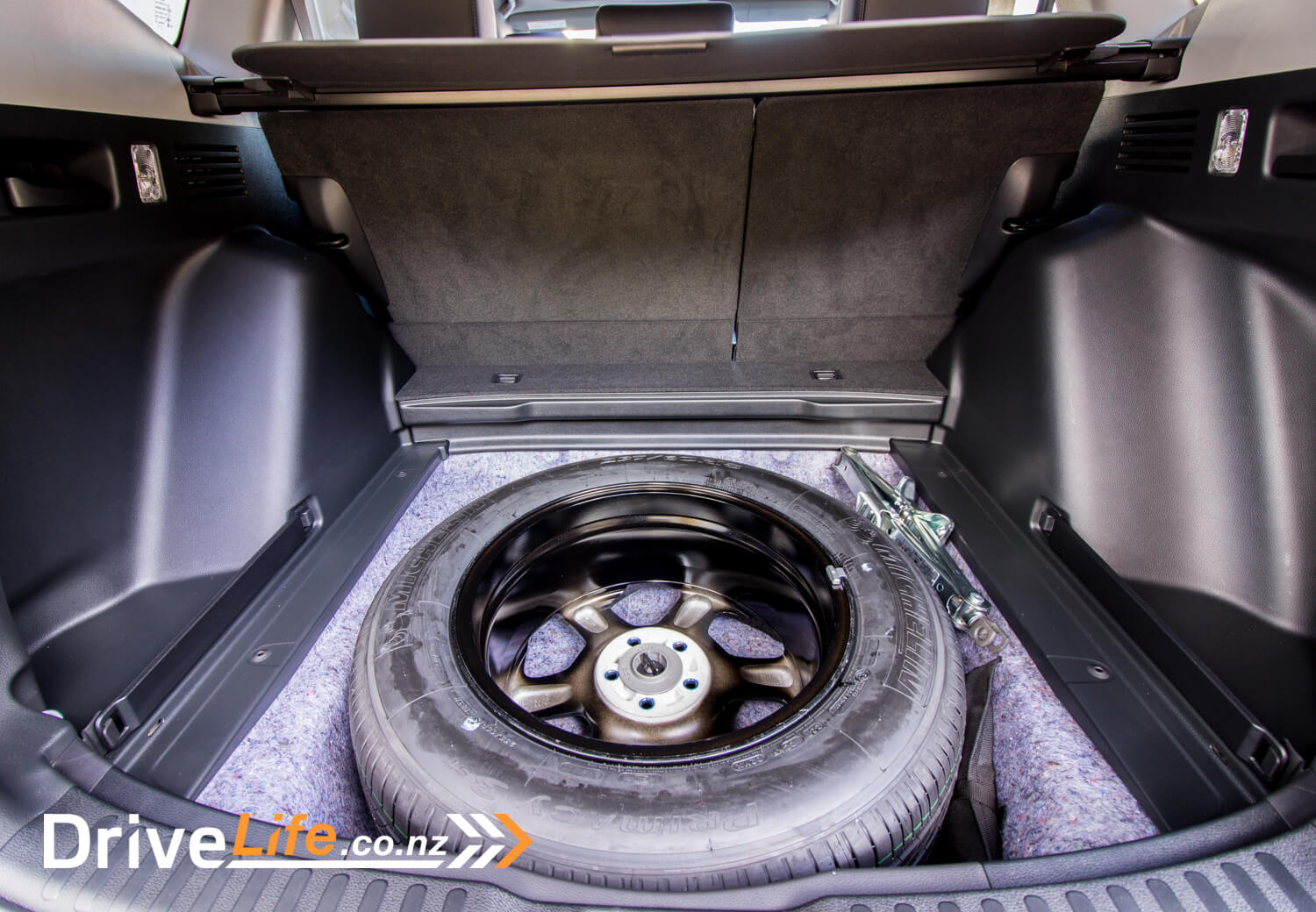

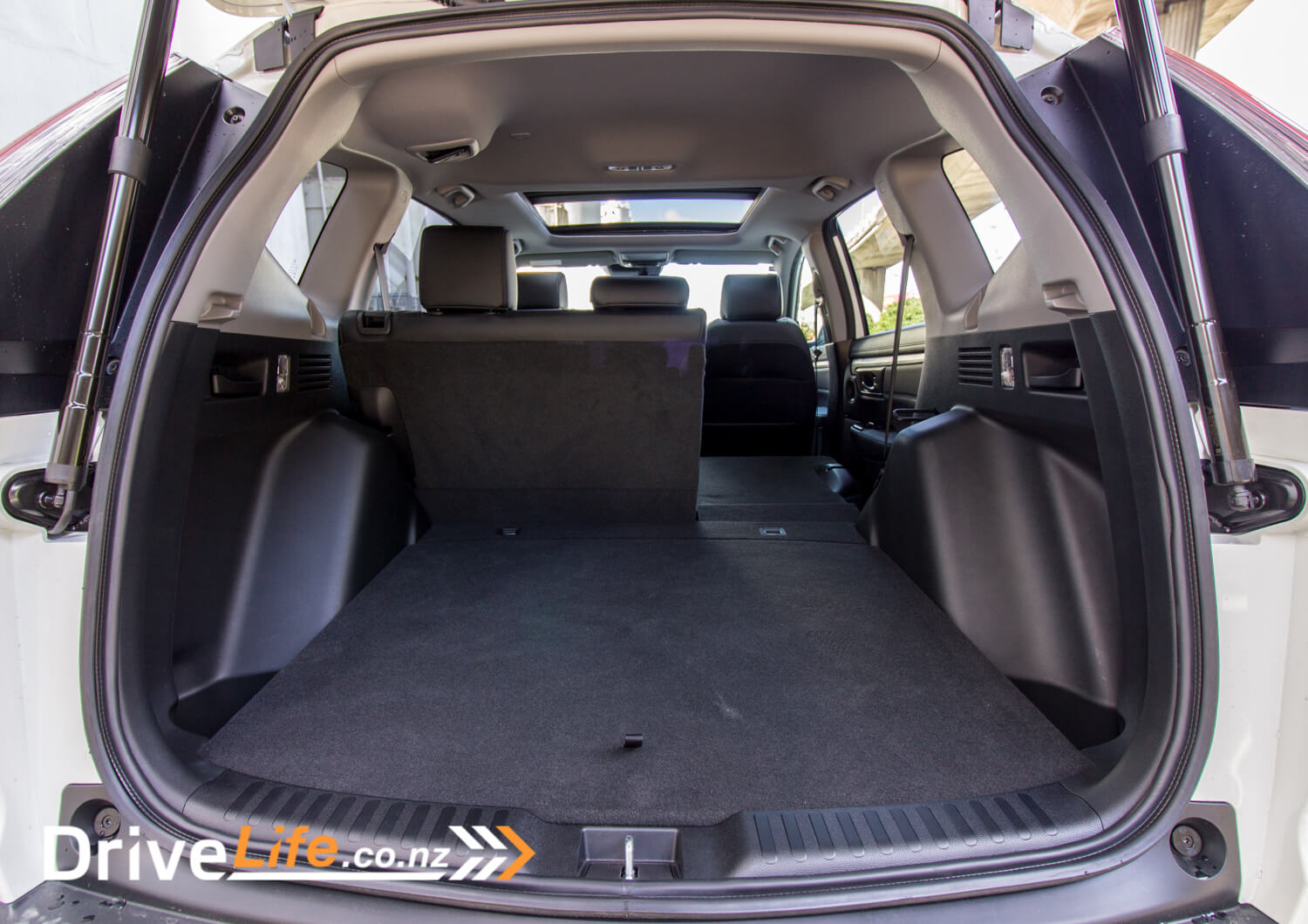
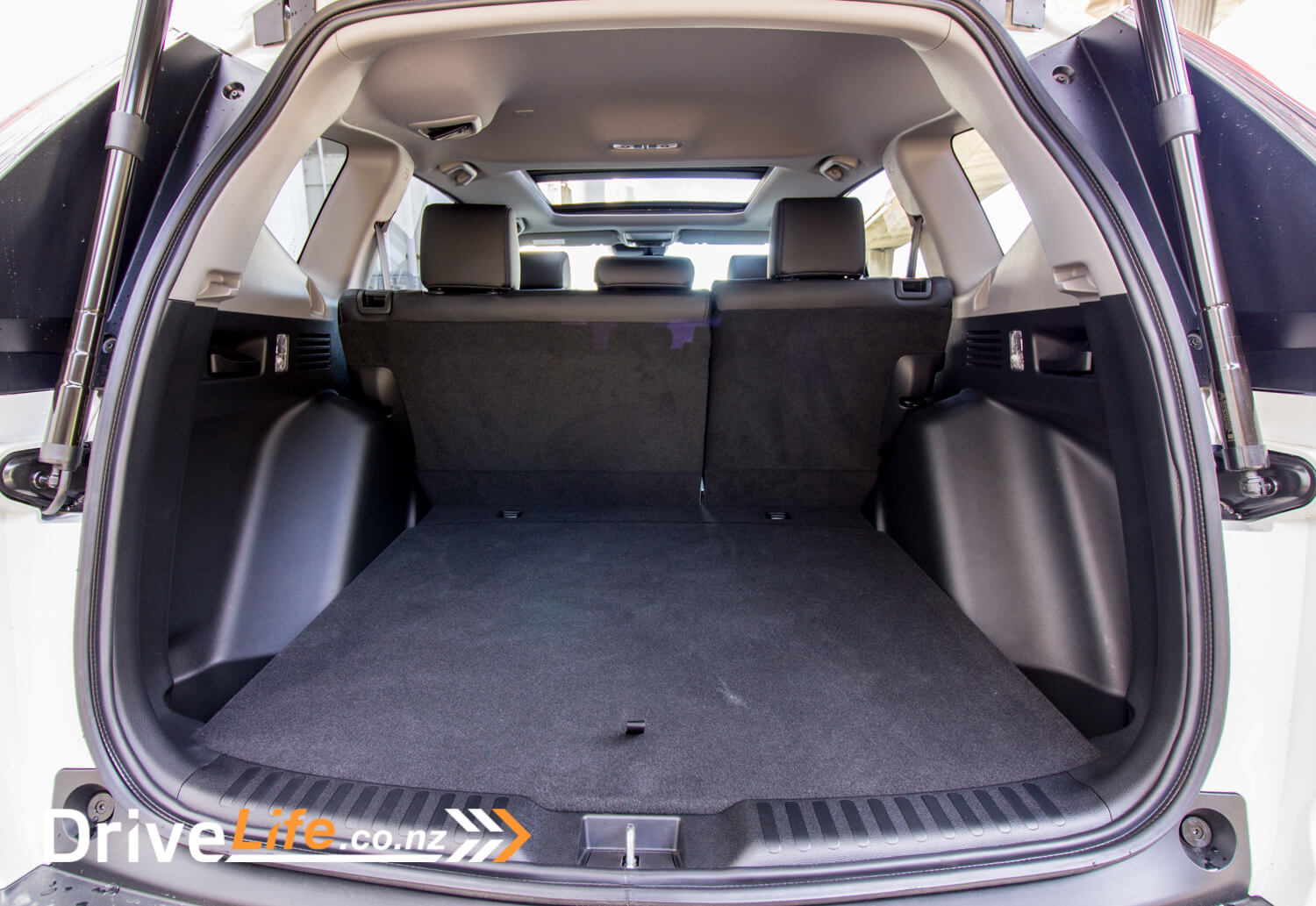


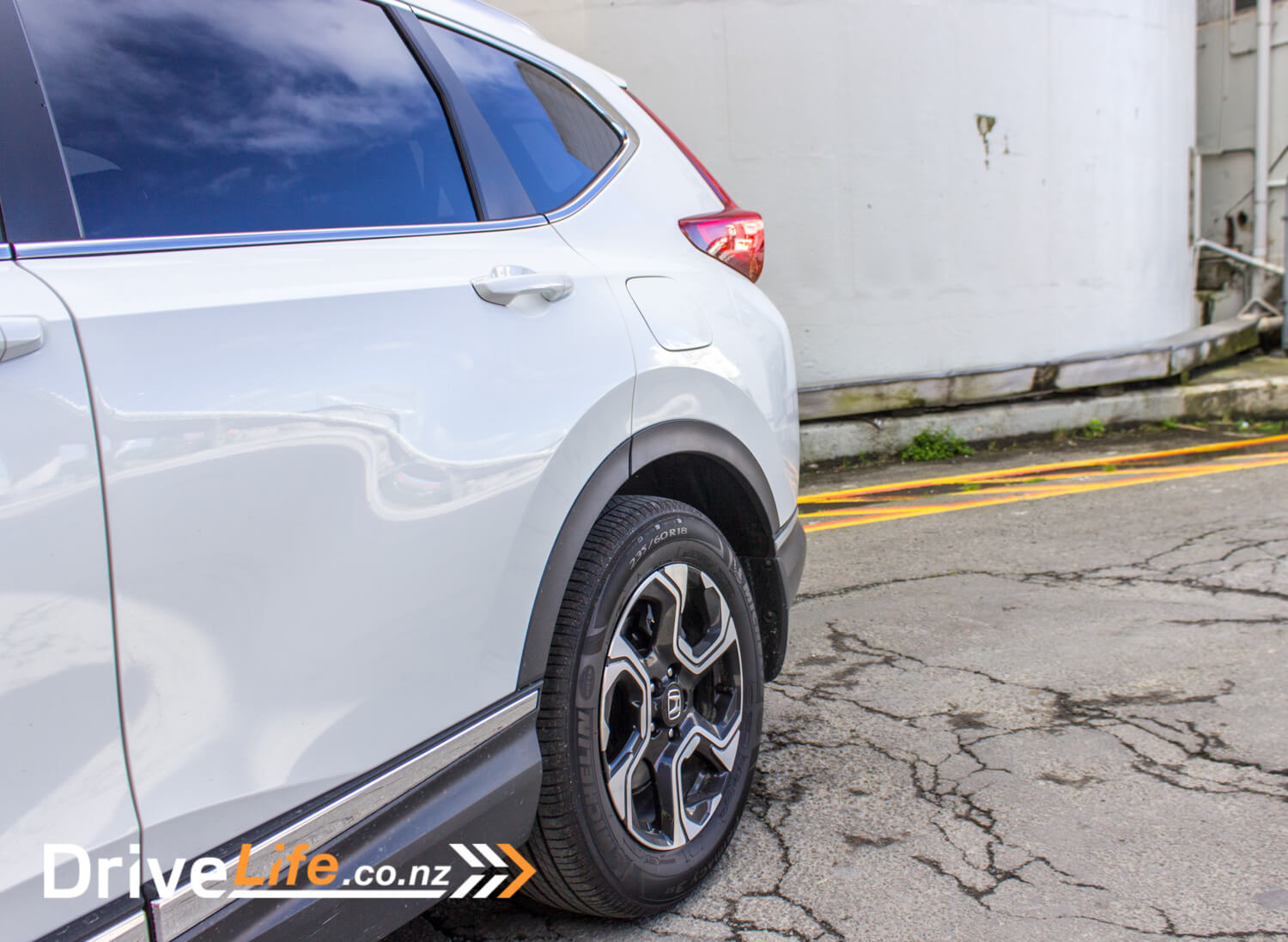

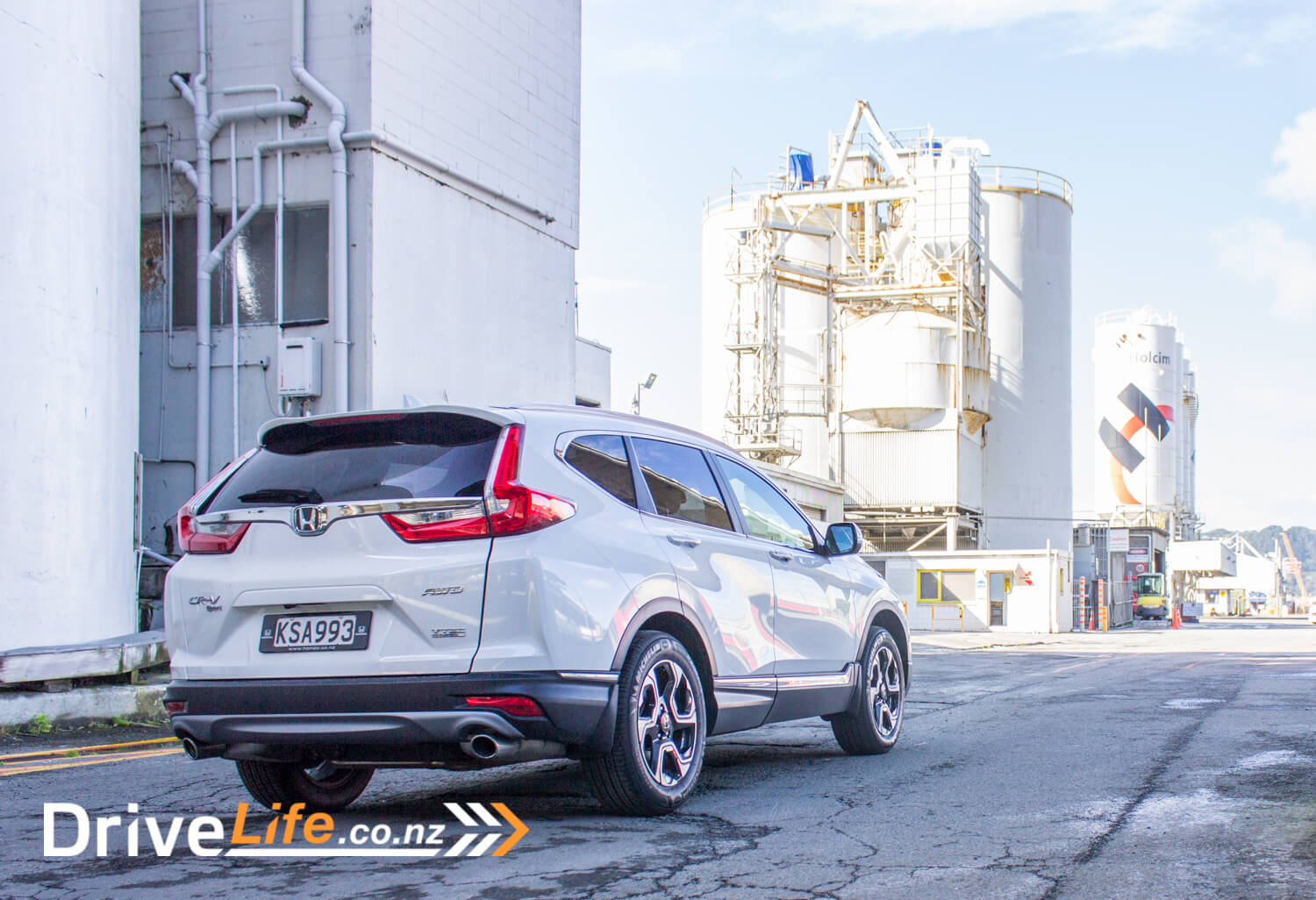




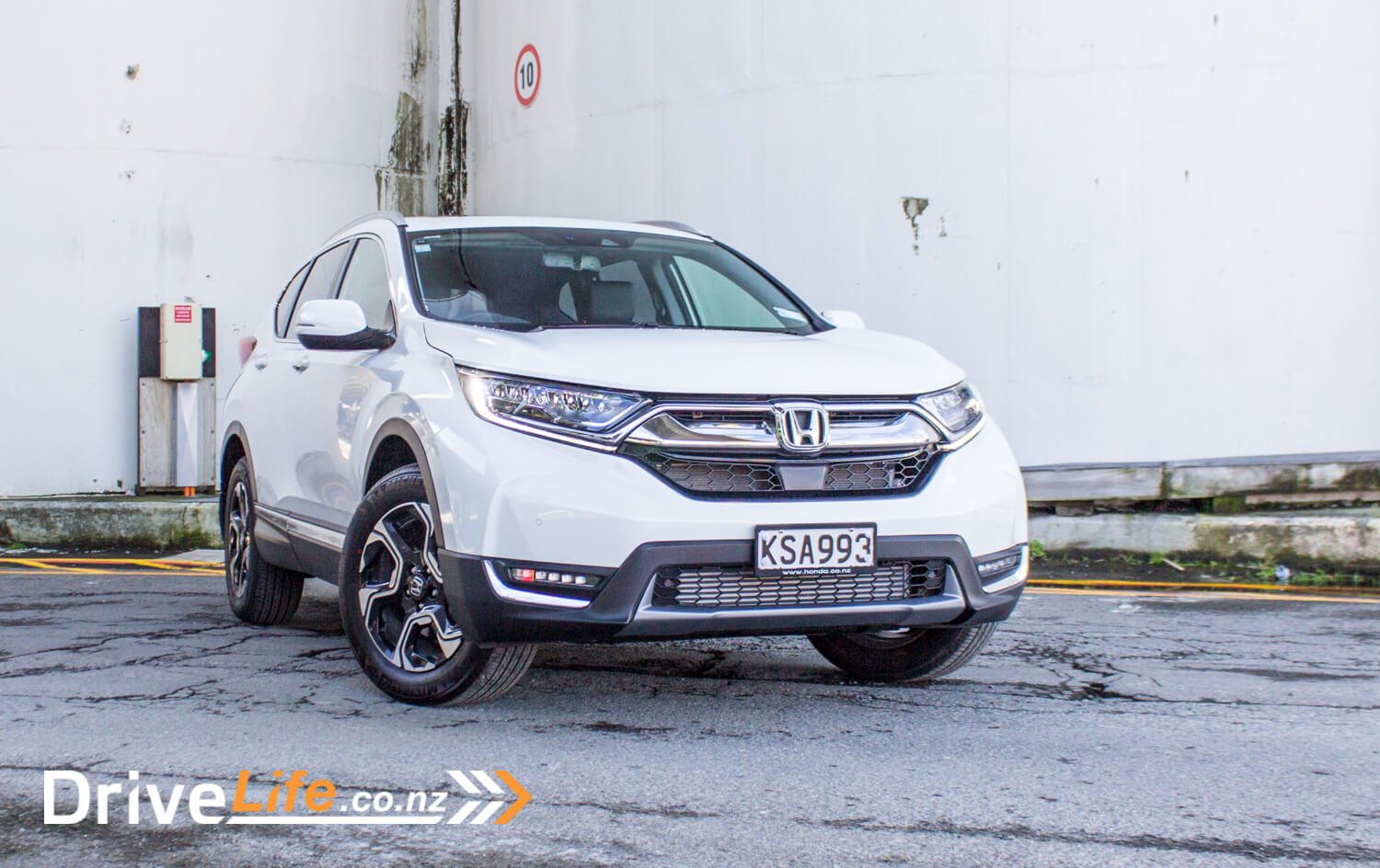
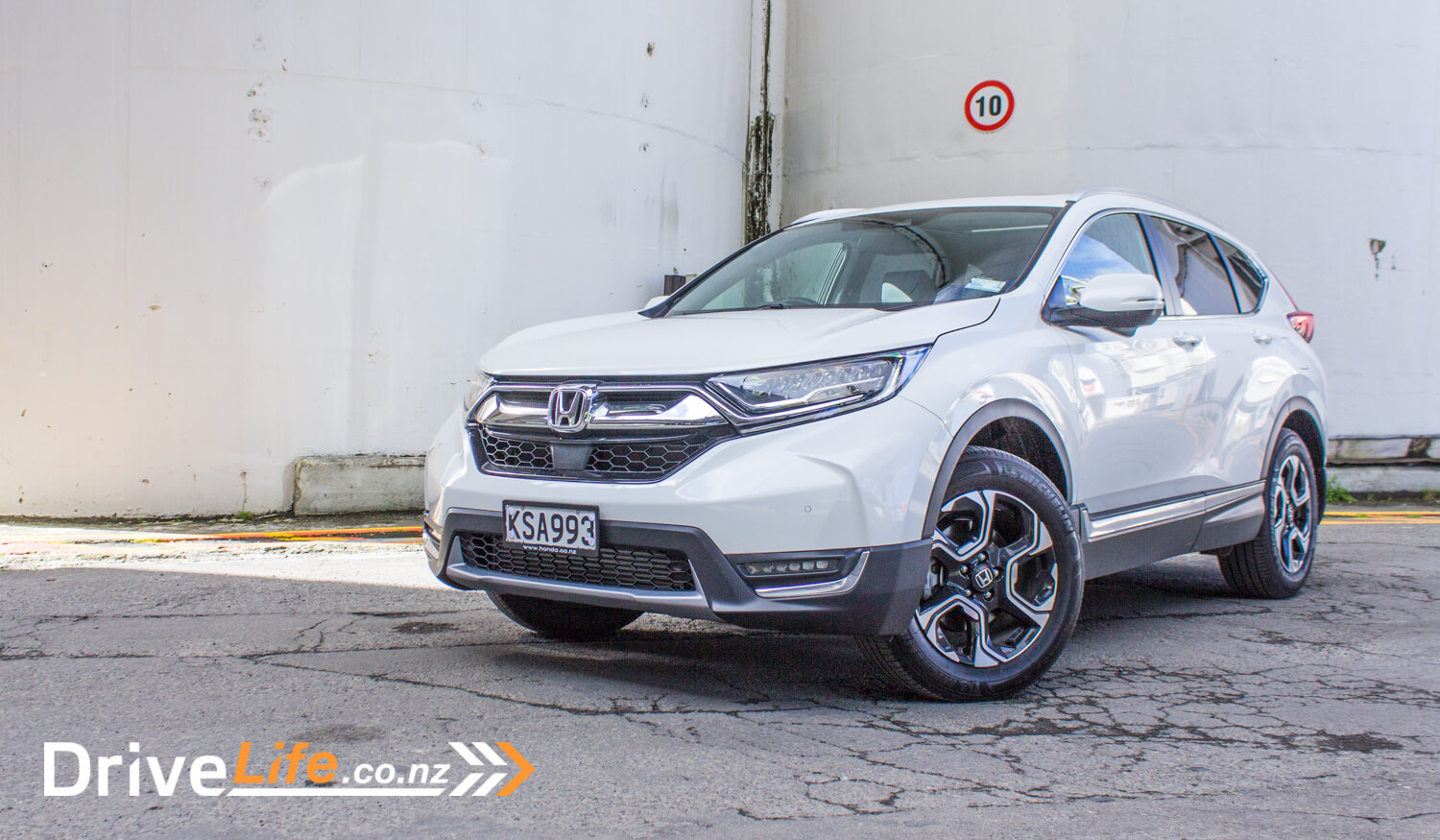













































Why do you think is there a need for AWD over a 2WD if the main purpose is urban and highway roads?
HI Josh. Mainly for people like those who go skiing. When you go to the ski field in season, the car parks are full of 7-seater AWD SUVs.
Even there there’s still people who like to tow boats or caravans, and yet take 7 people. Nothing worse than being on wet grass or on a boat ramp and wheel spinning… 🙂
Thanks for the comment!
Fred
Hi Fred. You mention the old car had a 1.8 l motor. It had a 2.4 l. Are you confusing the 1.8 l in the HRV
Cheers Dave
HI Dave. You are right! Thanks for pointing that out – it even passed through the editing process without being picked up. I’ll fix it now.
Cheers
Fred